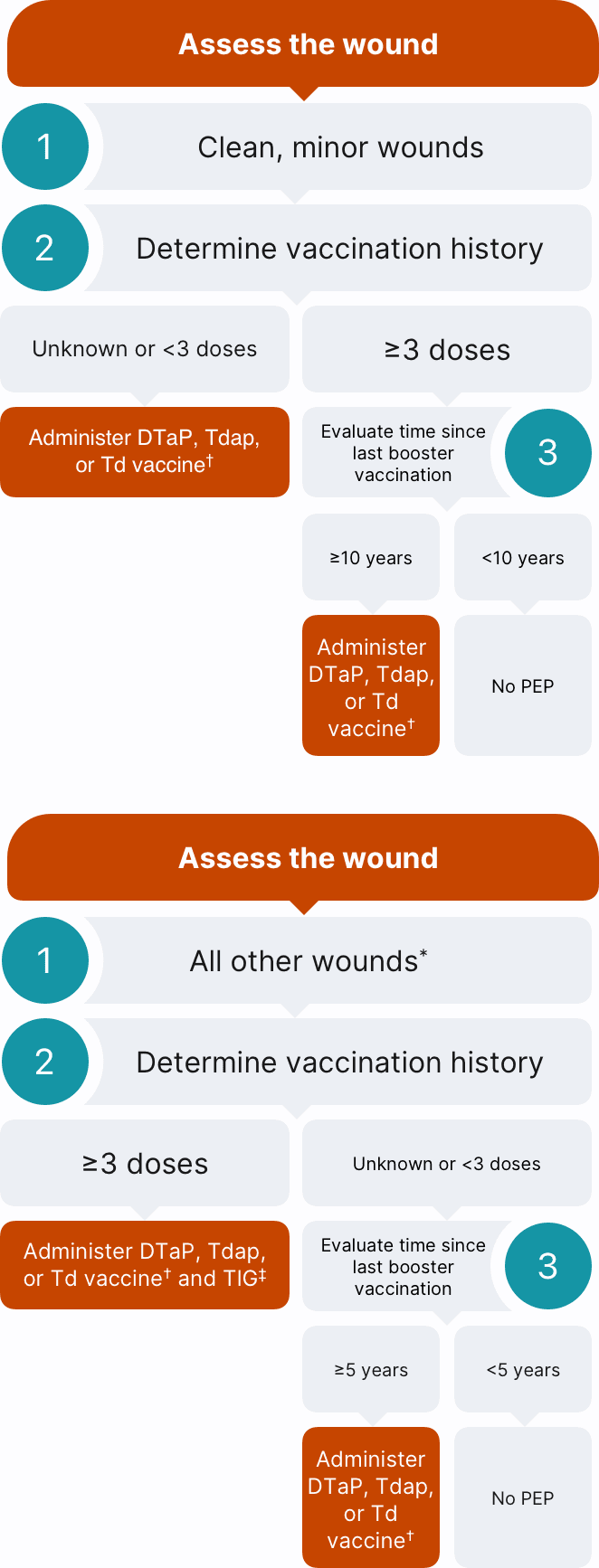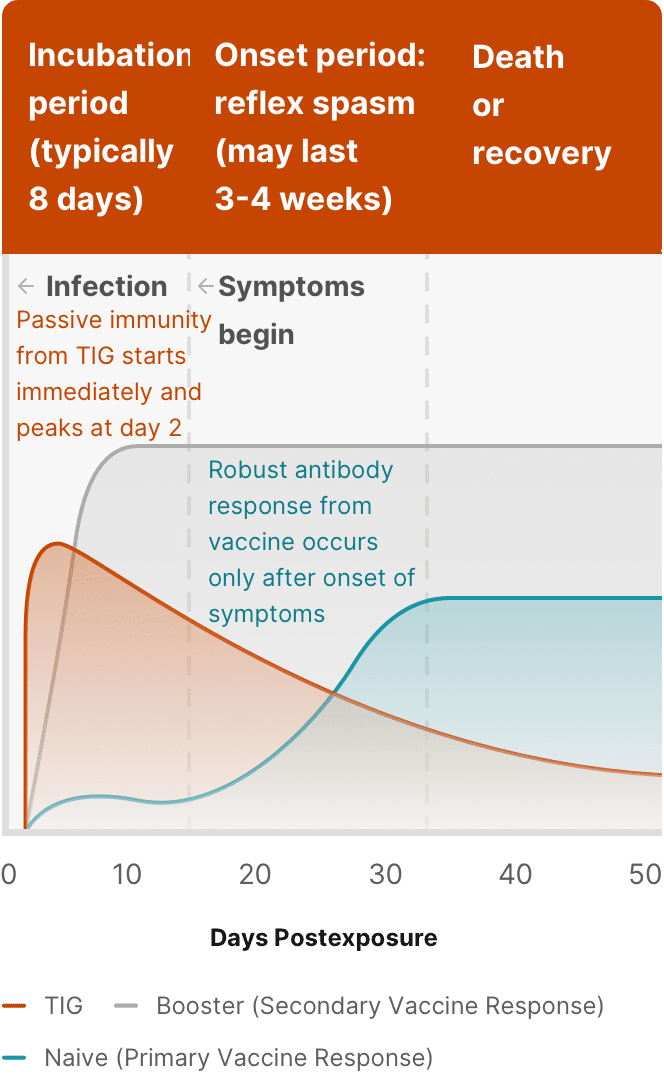Important Safety Information for HyperTET® (tetanus immune globulin [human])
HyperTET® (tetanus immune globulin [human]) is indicated for prophylaxis against tetanus following injury in patients whose immunization is incomplete or uncertain.
HyperTET should be given with caution to patients with a history of prior systemic allergic reactions following the administration of human immunoglobulin preparations.
In patients who have severe thrombocytopenia or any coagulation disorder that would contraindicate intramuscular injections, HyperTET should be given only if the expected benefits outweigh the risks.
Slight soreness at the site of injection and slight temperature elevation may be noted at times. Sensitization to repeated injections of human immunoglobulin is extremely rare. In the course of routine injections of large numbers of persons with immunoglobulin, there have been a few isolated occurrences of angioneurotic edema, nephrotic syndrome, and anaphylactic shock after injection. Administration of live virus vaccines (eg, MMR) should be deferred for approximately 3 months after tetanus immune globulin (human) administration.
HyperTET is made from human plasma. Products made from human plasma may contain infectious agents, such as viruses and theoretically, the Creutzfeldt-Jakob disease (CJD) agent that can cause disease. There is also the possibility that unknown infectious agents may be present in such products.
Please see full Prescribing Information for HyperTET.
You are encouraged to report negative side effects of prescription drugs to the FDA. Visit www.fda.gov/medwatch or call 1-800-FDA-1088.

